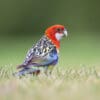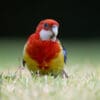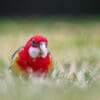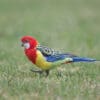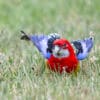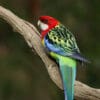Eastern Rosella
Also known as:
Rosella, Red Rosella, Common Rosella, White-cheeked Rosella, Red-headed Rosella, Golden-mantled Rosella
Also known as:
Rosella, Red Rosella, Common Rosella, White-cheeked Rosella, Red-headed Rosella, Golden-mantled Rosella

Platycercus

eximius
Size:
30 cm (11.7 in)
Weight:
95-120 g (3.3-4.2 oz)
Subspecies including nominate:
three: P.e. eximius, P.e. elecica, P.e. diemenensis
Colour Adult:
P.e. eximius: Male-red head and breast; white cheeks; yellow lower breast; pale green abdomen; red undertail coverts; black back with green spotting; blue outer wing coverts; pale green rump. Beak white. Eye brown. Female-as in male but head and breast paler in colour; underwing stripe pale coloured.
P.e. elecica: Both adults green/blue rump and uppertail coverts; gold spotting on back in male, green/yellow in female.
P.e. diemenensis: Both adults as in eximius, but with larger white cheeks patches; darker red head.
Colour Juvenile:
P.e. eximius: As in female but duller with pale underwing stripe.
Call:
Call in flight sharp; while perched a three syllable whistle on an ascending scale. Also metallic and piping notes at rest. Shrill screech when startled. Soft chattering or babbling while feeding.
More Information:
Content Sources:
CITES
BirdLife International
Cornell Lab of Ornithology/Birds of the World
Parrots: A Guide to Parrots of the World, Juniper and Parr, 1998
Parrots of the World, Forshaw and Cooper, 1977. 2010 edition
Parrots of the World, Forshaw, 2006.
Lexicon of Parrots, Thomas Arndt.
Parrots in Aviculture, Low, 1992.
Parrots: Their Care and Breeding, Low, 1986.
Captive Status:
Quite common in captivity.
Longevity:
20 yrs
Housing:
Walk-in enclosure, minimum length 3 m (9.8 ft).
Diet:
Small seed mix such as: canary, oats, safflower and small amount of hemp; spray millet; limited sunflower seed, dry, soaked or sprouted; sprouting pulses such as mung beans; cooked butter and other beans and lentils; boiled maize; green leaves such as: Swiss chard, lettuce, sowthistle, chickweed, dandelion; vegetables such as: carrot, corn, celery, zucchini or squash, green beans and peas in the pod; fruits such as: apple, pear, banana, orange, pomegranate; nuts such as: walnuts, lightly cracked hazelnuts, pecans and roasted peanuts; complete pellet.
Enrichment:
Provide fresh, unsprayed branches often, other chewables such as heat sterlized pine cones, wooden toys, and vegetable tanned leather toys. Also provide bowls for bathing.
Nest Box Size:
Vertical box 7″ x 7″ x 24″ (17.8 cm x 17.8 cm x 61 cm).
Clutch Size:
6-7
Fledging Age:
5 weeks
Hatch Weight:
—
Peak Weight:
—
Weaning Weight:
—
World Population:
Unknown, increasing.
IUCN Red List Status:
Least Concern
CITES Listing:
Appendix II
Threat Summary:
Not globally threatened. Abundant in most of its range. Has benefited from forest clearance for pasture and cereal cultivation. Race diemenensis is declining in Tasmania. Has been heavily used in trade.
Range:
P.e. eximus: NE New South Wales south to SE South Australia.
P.e. elecica: NE New South Wales north to SE Queensland.
P.e. diemenensis: E Tasmania.
Habitat:
Are found up to 1250 m (4100 ft) in a variety of habitats such as open forest, woodland, riverine forest, Eucalypt copses, forest margins, grasslands, paddocks, agricultural lands and suburbs.
Wild Diet:
Feeds on seeds of Eucalyptus and Acacia are favoured, with seeds of shrubs and grasses such as Capsella bursapastoris, Cerastium vulgatum, Melilotus alba, Onopordon acanthium, Carduus marionus, Hypochaeris radicata, Actinotus helianthi, Amaranthus and Oxalis; will sometimes extracts seeds from dung. Also berries of Pyracantha and Crataegus, eucalypt blossoms, Populus leaf-buds, Gazania leaves, insects and their eggs and larvae, Schedotrioza psyllids. Commonly takes spilt grain in farmyards and at roadsides.
Ecology and Behaviour:
Feeds both in the trees and on the ground, usually in pairs or small groups. Large flocks are sometimes seen from the end of the breeding season until spring. Birds feed early in the day, rest during the hottest hours of the day, then feed before roosting at night.
Clutch and Egg Size:
6-7 rounded eggs, 27.0 x 21.5 mm (1 x 0.8 in)
Breeding Season:
August–February, sometimes April–May. Nest is in hollow limb or tree; also stump, fence post, fallen log, rabbit burrow, enlarged tunnel of Rainbow Bee-eater, abandoned cavity of other species of bird, elkhorn fern on side of house, rock face and buildings.
Related Links:
—
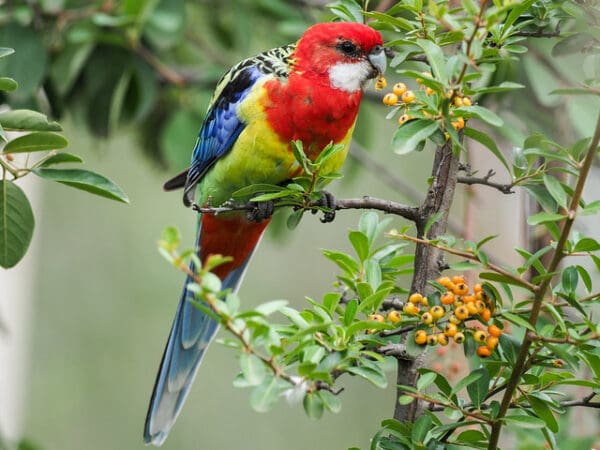

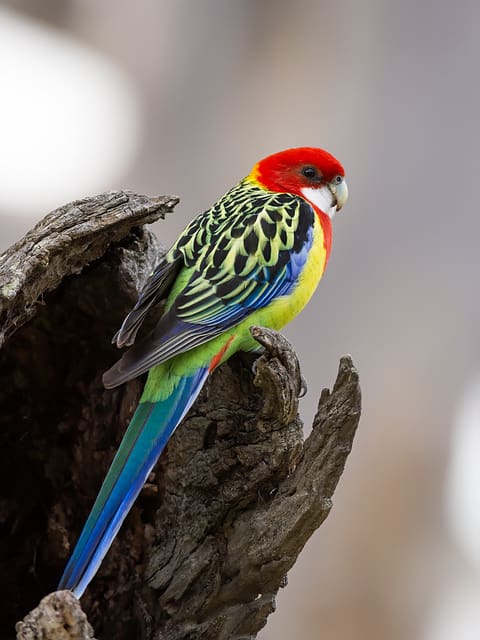



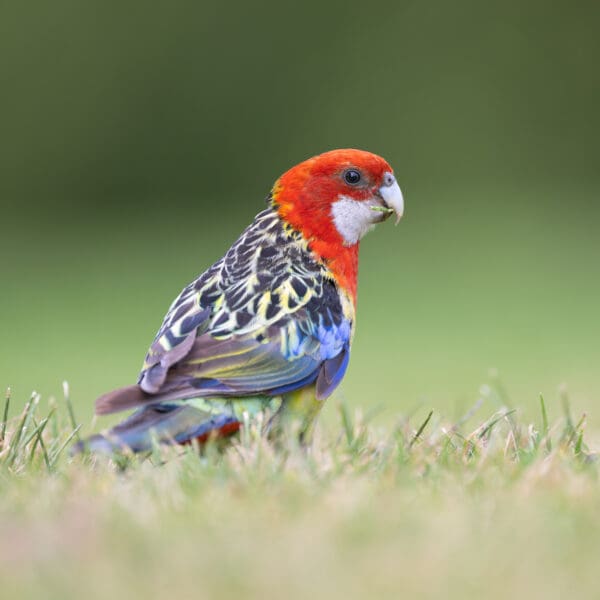
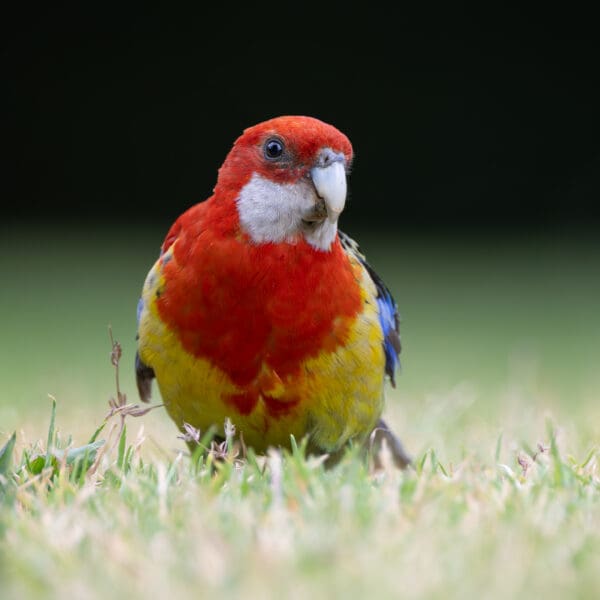

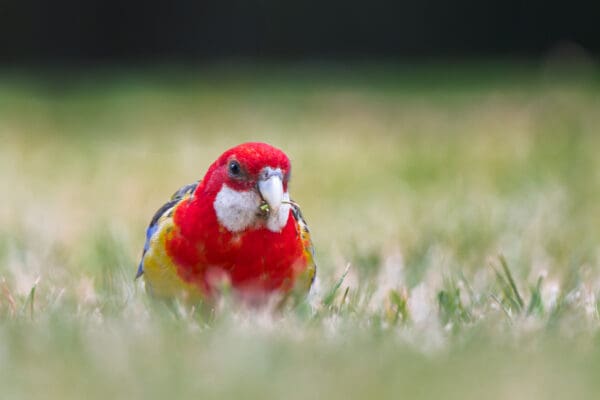
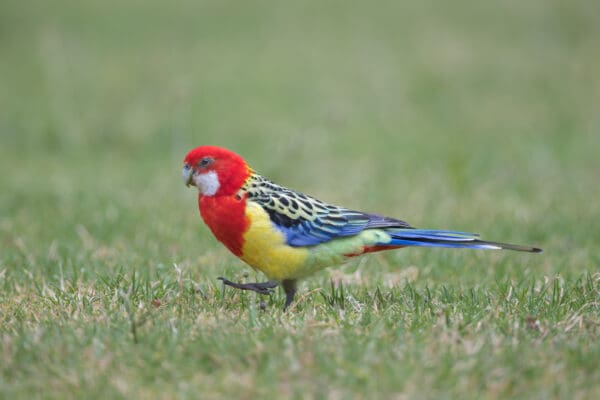
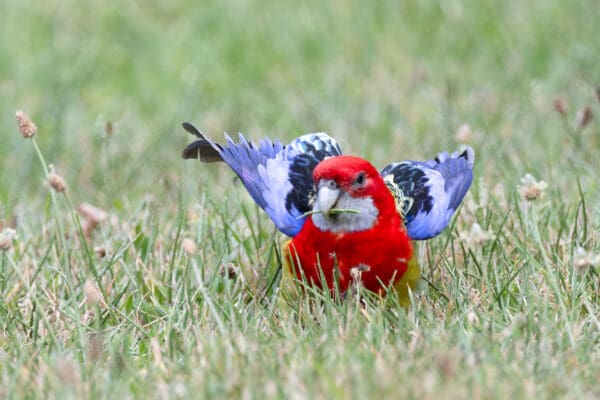
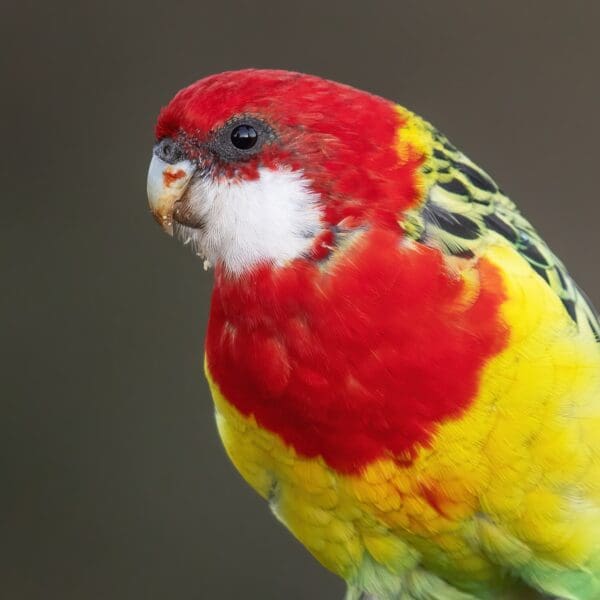
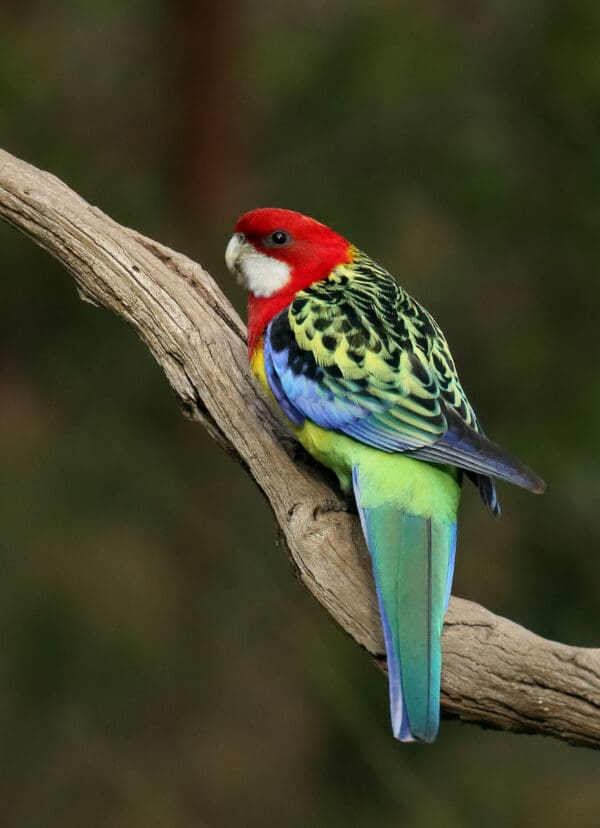
![© Duncan McCaskill [CC BY-NC 2.0] via Flickr A Wild Eastern Rosella perches on a twig](https://parrots.org/wp-content/uploads/2023/01/wpt_Eastern-Rosella_1188-21-100x100.jpg)
![© Dr. Nassar Hallaweh [CC By 2.0] via Flickr A wild Eastern Rosella forages on the ground](https://parrots.org/wp-content/uploads/2023/01/wpt_Eastern-Rosella_1188-19-100x100.jpg)
![© David Cook [CC BY-NC 2.0] via Flickr A wild Eastern Rosella perches on a snag](https://parrots.org/wp-content/uploads/2023/01/wpt_Eastern-Rosella_1188-18-100x100.jpg)
![© Sam Fox (originally posted to Flickr as Tropical Parrot) [CC BY-SA 2.0] via Wikimedia Commons A closeup of an Eastern Rosella](https://parrots.org/wp-content/uploads/2023/01/wpt_Eastern-Rosella_1188-17-100x100.jpg)
![© Francesco Veronesi (Eastern Rosella - Deniliquin - Victoria_S4E3501) [CC BY-SA 2.0] via Wikimedia Commons A wild Eastern Rosella clings to a tree trunk](https://parrots.org/wp-content/uploads/2023/01/wpt_Eastern-Rosella_1188-8-100x100.jpg)
![© Dave Curtis [CC BY 2.0] via Flickr A wild Eastern Rosella perches at a nest cavity](https://parrots.org/wp-content/uploads/2023/01/wpt_Eastern-Rosella_1188-20-100x100.jpg)
